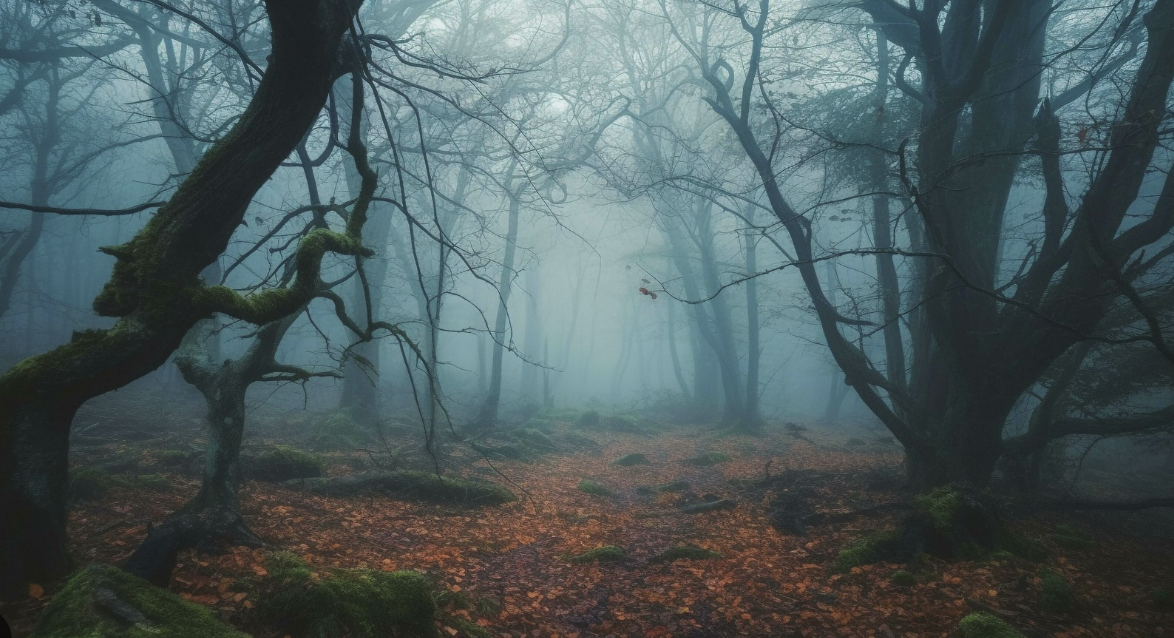
Mysterious Stories Blog
Strange, disturbing and mysterious stories from the outdoors
The Strange disappearance of Steven Paul Thomas from Mount Marcy
Steven Paul Thomas, disappeared April 12, 1976, Mount Marcy, Adirondacks, New York State.
Revised January 2024
Steven "Steve" Paul Thomas, 19, was hiking with five college students near Mount Marcy on April 12, 1976. The group comprised Mark Seymour, James Thackaberry, Ken Sherwood, Robert Bromley and Bruce Weaver. At the last minute, Bruce Weaver had invited his childhood friend, Steven, to make a group of six.
What is and where is Mount Marcy?
Mount Marcy is the highest point in New York State, with an elevation of 5,343 feet (1,629 m). It is located near the Town of Keene in Essex County and is in the heart of the Adirondack High Peaks Region of the High Peaks Wilderness Area. With extreme weather changes, April is Mount Marcy's most challenging month for hikers. Marcy's upper trail wanders on and off the crest, and at that time of the year, the cairns and yellow-paint blazes that mark the trail are buried under snow. Hikers who reach the summit can easily take a wrong turn coming down and can hike into a dangerous 50-foot snow dump known as Panther Gorge.
The hike to Mount Marcy
On Sunday morning, April 11th, the day Steve left Kayuta Lake to begin the hike, his mother, Mary Thomas, had put too much baking soda in her pancakes whilst cooking breakfast and saw it as a bad omen. She was worried about Steve camping with a group he didn’t know, except for Bruce Weaver and also concerned about the risk of heavy snow.
Adirondak Loj (near Heart Lake, New York)
When Steve left Kayuta Lake with Bruce Weaver and Kenneth Sherwood, the three drove to Lake Clear to meet the rest of their hiking companions, Mark Seymour, Robert Bromley, and James Thackaberry. According to reports from the group, Steve didn’t like these guys and wouldn’t talk to them. Steve's family also said he could be antagonistic.
The result was that Steve and Bruce left Lake Clear alone for the Adirondak Loj (near Heart Lake, New York), 37 miles away. They then parked the car, hiked the 2.3 miles to Marcy Dam for the night, and stayed in a lean-to 87 yards from the junction of the blue (to Indian Falls) and yellow (to Avalanche Lake) trails and 28 yards from the water behind the dam.
Steve woke early, at 6 a.m., but Bruce only woke at 8 a.m., and they followed the blue trail to Indian Falls to meet the rest of the group: Robert, Ken, Mark, and Jim.
The six of them then hiked together. Thomas had some Colombian marijuana buds, which they smoked on the way up to the mountain summit. Steve was quiet and hardly talked on the hike, lost in his thoughts.
By 3.30 pm, they'd climbed to the Lower Plateau lean-to (Hopkins), heading for Upper Plateau, and could see the summit, about a mile away. But by now, they were cold and wet, and the group decided to stay put, build a fire and tackle the summit the next day.
Steve’s solo-hike
But Steve didn't feel like calling it a day. Steven lit his Svea stove to make Darjeeling tea as the others made camp and looked at a map. He hung his rucksack in the back right corner of the lean-to and asked Bruce, “You want to go for a walk?”. But Bruce didn’t want to go and was quite happy to stay put until the following day.
He then told the rest of the group he was going further along the trail despite their protestations. He wore just a t-shirt and jeans with a yellow rain slicker over his blue down jacket and boots. He left his backpack with the others and took no provisions or equipment apart from his knife, having not eaten since breakfast. He was without a pack, snowshoes, compass or map.
In April 1976, the snow was hard-packed and offered ideal walking conditions. A full moon helped improve visibility. It was around 10 degrees but windy.
When Thomas walked away from the lean-to, nobody gave it a thought. "As far as I know, he was just checking to see how far he had to go to the summit," Sherwood said. "We just started putting up tents, talking, and having a good time. Then it started getting late, and it was like: `Where is he?'"At 6 pm, Weaver told the group not to worry since Steve knew what he was doing.
The search
When Steve didn't return, Robert and Bruce tried finding him by setting out at around 10 pm with flashlights and 55-60mph gusts of wind howling around them. But with no luck. With a wind chill of minus 40, exposed skin could be badly frostbitten. They were quickly driven back by the freezing temperatures and, unfortunately, obscured Steve's trail with their footsteps. On the way back down, they took a wrong turn but found their original trail, which fortunately made it back to the lean-to.
They had a dog with them. "I remember the dog freaked out that night," Sherwood said. "He just kept whining. He wouldn't leave the tent." They got into the lean-to in their sleeping bags and hoped that Steve had found shelter. Nobody slept that well.
As daylight broke on Tuesday, the group decided to keep searching for Steve. Weaver said. "The thought was, rather than burn up four or five hours" hiking for a ranger, "with someone who's hypothermic, it would be better to find them right then."
They formed two groups to look for him. Bruce and Ken followed the red trail to Bushnell Falls, looping back to the lean-to along the yellow trail. The others climbed to the top of Marcy, circling as they searched. Neither group found any trace of the lost hiker.
At 3 p.m., Thackaberry, Bromley, and Seymour decided to hike out for help as Weaver and Sherwood were exhausted. They decided to stay at the lean-to in case Steve returned.
The three tired members of the group went to get help and hiked back towards the Adirondack Loj. Shortly after, they met Ranger Gary Hodgson at 8:45 p.m. on April 13, 1976, to report Steve missing. Unfortunately, it had been two nights since their companion vanished, reducing the chance of a successful rescue.
Searchers didn't reach the mountain until the morning of Wednesday, April 14, leaving Steve with no gear or food, if he was still alive in the cold temperatures.
Retired DEC ranger Pete Fish said, "You've got 360 degrees to choose from. About 2 degrees are right. If it's snowing, you don't know where to go."
Department of Environmental Conservation (DEC) rangers and volunteers searched on foot with specially-trained German shepherd dogs and three helicopters. DEC’s chopper flew for five days, the State Police’s for three, and the Air Force’s for two. The choppers dropped men to likely spots where they’d be fresh to fight through the vegetation. The searchers searched the area around Little Marcy, the Ausable Lakes, and the Johns Brook and Feldspar stream valleys. On the first day of the search, the state helicopter made an air search of the Marcy area, twice circling the area between the Ausable Lakes and Mount Golden. “There was no track,” a ranger said afterwards, “no sign of him.”
Steve's brother, Bob Thomas, returned again and again to the mountain after the authorities failed to locate him or his body after two weeks of official search and rescue operations finished on April 21, 1976. He walked a total of 2,500 miles and reached the summit of Mount Marcy 600 times, dropping down each time to search the terrain in the area. “Sometimes I’d do it five or ten times a day,” he said, “just back and forth, back and forth, up the trail to the summit and down again. I was possessed. …You’ve got to understand, no longer are we normal human beings.”
What happened to Steve Thomas?
Steve's hiking companions were questioned in detail about his disappearance, but the authorities did not believe there was anything suspicious about their story.
There was speculation that Steve had vanished intentionally as he had returned from an extended western trip only a month earlier and was secretive about it, hinting at plans he would not reveal. But there has been no sign of Steve elsewhere in the United States. A cassette in the tape deck of Steve’s car was inserted a few weeks after his disappearance. Bob said, “It was a strange song. It ends, ‘all you hear is the blowing…the lonely wind blowing.’ Weird. It really struck me.” He believes the song was called “Obscured by Clouds.”
Steve's brother Bob said the family was annoyed with the search effort. His frustration had begun with the late notification of his brother’s disappearance. “I was mad about that,” he says. “They took so long to contact us, up all day Wednesday in the helicopter, and we didn’t hear about it until night.”
When the intensive search ended, the Thomas family continued to press state and federal officials for more organised efforts, and they got four helicopters, which extended the search area, although unsuccessfully.“You know how guys can endure,” Bob said. “I thought Steve hurt himself way the hell out there, and he’s just waiting…I could feel what he’s going through, just waiting for somebody to come.” He respected the Rangers but still holds bitterness toward some desk-bound officials who called off searches.
Still refusing to give up hope, the Thomas family continued their efforts. With Sue, sister Marilyn and William Gurley, Bob found the camping gear and then later the remains of a man missing for more than three years.
What happened to Steve? Was it similar to the story of Captain Lawrence Edward Grace "Titus" Oates, British army officer and later an Antarctic explorer, who died during the Terra Nova Expedition with Captain Scott? Oates, who had gangrene and frostbite, walked from his tent into a blizzard and famously told his companions on March 17th, 1912, "I am just going outside and maybe some time". Like Oates, Steve seemed unusually quiet that day on the hike. Did he walk onto the mountain and intend to disappear and commit suicide? Alternatively, did he intend to start a new life somewhere and vanish? Why did he leave his backpack and other gear behind, lessening his chances of survival? Maybe it was bad luck as the wind whipped up that day up to 60mph? The dog in the lean-to seemed uncomfortable and distressed that night, indicating something more sinister—a strange, sad and disturbing story.
Exclusive articles for members of StrangeOutdoors that are not available elsewhere on the site.
Read other strange stories from New York
The strange disappearance of Douglas Legg from the Adirondack Mountains
The Very Strange disappearance of Tom Messick whilst hunting near Brant Lake
The death of Ronald DeFeo - The Amityville Horror Killer
Sources
http://articles.baltimoresun.com/2001-05-20/news/0105200003_1_mount-marcy-paul-thomas-ken-sherwood
http://www.adirondacklifemag.com/blogs/2014/07/23/search-steven-thomas/
http://www.doenetwork.org/cases/4418dmny.html
https://en.wikipedia.org/wiki/Mount_Marcy




